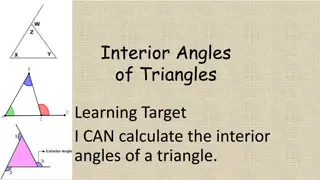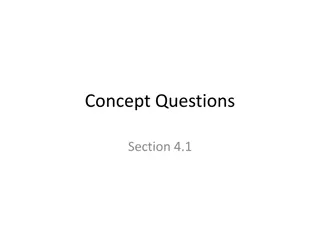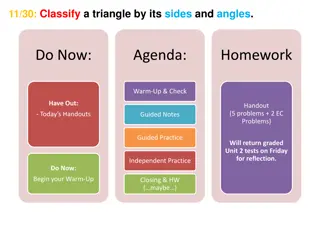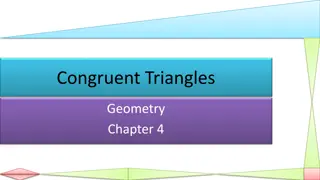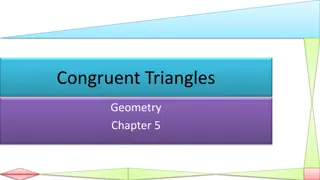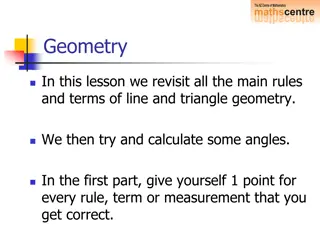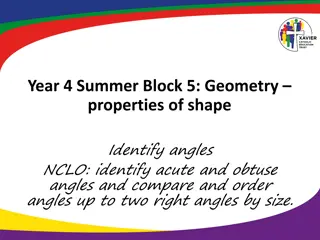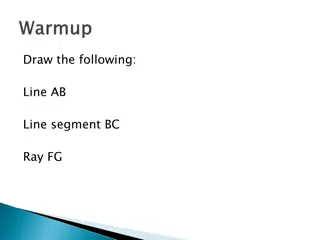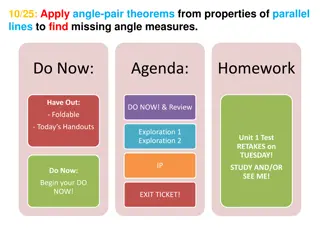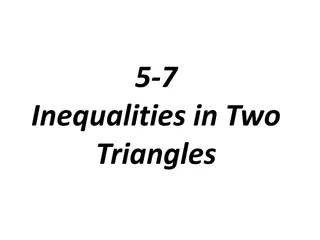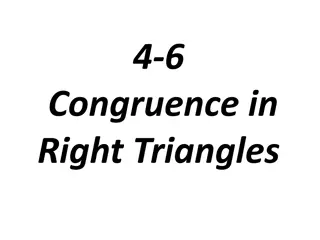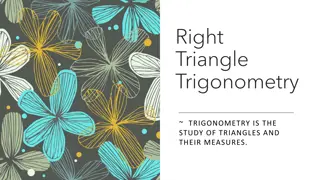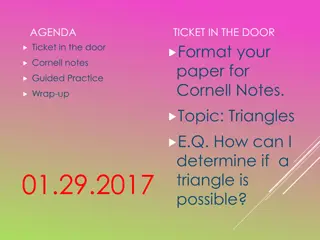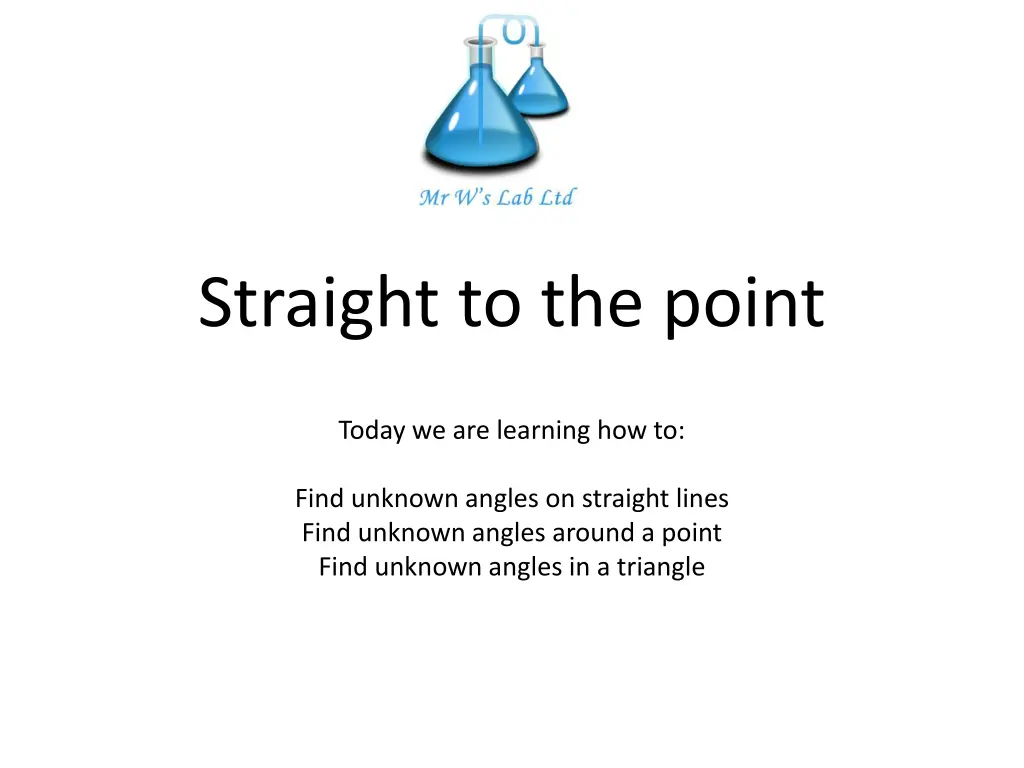
Understanding Angles in Geometry: Triangles, Lines, and Points
Explore how to find unknown angles on straight lines, around a point, and in a triangle in geometry. Uncover the reasons behind the 180-degree sum in a triangle, 360 degrees around a point, and the historical significance of 360 degrees in Babylonian mathematics.
Download Presentation

Please find below an Image/Link to download the presentation.
The content on the website is provided AS IS for your information and personal use only. It may not be sold, licensed, or shared on other websites without obtaining consent from the author. If you encounter any issues during the download, it is possible that the publisher has removed the file from their server.
You are allowed to download the files provided on this website for personal or commercial use, subject to the condition that they are used lawfully. All files are the property of their respective owners.
The content on the website is provided AS IS for your information and personal use only. It may not be sold, licensed, or shared on other websites without obtaining consent from the author.
E N D
Presentation Transcript
Straight to the point Today we are learning how to: Find unknown angles on straight lines Find unknown angles around a point Find unknown angles in a triangle
KNOWLEDGE EXTRACTION What do you know about the following?
MAKE YOU THINK! Take any triangle and tear the 3 angles off from each corner. Put them together. What angle do they make?
MAKE YOU THINK! Why are there 180 degrees in a triangle or a straight line? Do the angles in any triangle always sum to 180 degrees? So why are there 360 degrees around a point?
DID YOU KNOW? Reason #1: The Length of the Year Even if you have absolutely no idea right at this instant why there are 360 degrees in a circle, I bet that if you stop and think for a few minutes you can figure out one possibility. If after those few minutes you re still not sure, think about where else you ve seen a number that s close to 360 in your life. And if you re still stuck after that, think about the Sun the Earth orbits and calendars.
DID YOU KNOW? Reason #2: Babylonians and Base-60 Numbers But that s not the end of the story. Because there are other reasonable ideas out there as to the origin of the 360 degree convention. As we saw earlier, the Babylonians used a 360 day calendar. And, as it turns out, the Babylonians also used a base-60 number system (called the sexagesimal system). Just as we use 10 different symbols to represent numbers in our base 10 decimal system, the ancient Babylonians used 60 symbols to represent numbers. Why does this matter? Well, 60 x 6 = 360. This means that 360 is a nice even multiple of the number base in the Babylonian system (which would have had the same aesthetic value to their brains that a nice even multiple of 10 has to ours). But there s more to it than that. The Babylonians knew about equilateral triangles. And they knew that if you arranged 6 of these equilateral triangles in a certain way with the edge of one aligned on top of the edge of the next, the last one would end up meeting back up with the first. In other words, the total angle formed by 6 of these equilateral triangles would be the same as the angle around a circle. Given the Babylonian usage of 60 as their number base, they decided that each of the angles of an equilateral triangle would be 60 degrees. And thus, when you multiply these 60 degrees by the 6 equilateral triangles that combine to create a sort of circle, you get 6 x 60 = 360 degrees. And thus, 360 degrees in a circle.
DID YOU KNOW? Reason #3: The Many Factors of 360 But that s still not the end of the story because there s another reason to love the number 360. Namely, it s evenly divisible by 2, 3, 4, 5, 6, 8, 9, 10, 12, 15, 18, 20, 24, 30, 36, 40, 45, 60, 72, 90, 120, and 180. That's a lot of factors! And that makes 360 a really convenient number because it means we can divide a circle into 2, 3, 4, 5, 6, 8, 9, 10, 12, and so on even parts. It makes solving problems by hand which, mind you, was the only way to solve problems thousands of years ago much easier. While this alone doesn t seem like enough reason to have swayed people to define a circle as having 360 degrees, it certainly wouldn t have hurt. And it s entirely possible that it was a combination of all three reasons (and possibly others as well) that ultimately lead us to the definition of a degree that we still use today.
Confidence builder 120o ao
Confidence builder 120o 60o bo
Confidence builder co 120o 60o 70o 120o
Confidence builder 50o 120o do 60o 70o 120o
Confidence builder 50o 120o 30o 60o 70o 120o
SHOW YOUR STRENGTH Your turn! Find all the angles within the triangles and explain why they are what they are: 40o

